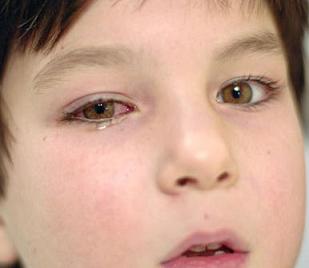Simple Steps to Prevent an Eye Infection and Treating Blepharitis

Blepharitis is an extremely common condition that causes inflammation of the eyelashes. This condition can be extremely difficult to treat as it recurs frequently. Complications of blepharitis include:
Barley: A small red sore on the top of the eyelid caused by an allergic reaction of the salivary glands. Barley often causes burning and irritation. This leads to permanent scarring.
Discharge from the eyes: Discharge from the eyes is a thick white liquid that dries out the upper eyelid. It is often accompanied by a burning sensation. In extreme cases, the discharge may have an unpleasant odor.
Damage to the epidermis: Inflammation of the eyelids often damages the collagen and elastin fibers present in the eyelashes. When this happens, the infection spreads very easily to other areas of your eyes.
Corneal ulcers: Inflammation of the eye can cause thickening or thinning of the blood vessels inside the cornea. The thickening can lead to increased pressure on the eye. This is accompanied by redness.
Bleeding from the eye: Bleeding from the eye occurs when fluid flowing out of the eye cannot drain through the tears. These fluids accumulate under the surface of the eye and eventually cause swelling. If left untreated, bleeding can lead to corneal ulceration called glaucoma.
Excessive eyes: Thick discharge from the eye area may also contain pus. This usually occurs after a discharge from the eye. This condition, known as discharge from the eyes with pus, can cause further damage to the area around the eye and cause pain.
Eye infections and blepharititis are very common conditions. Therefore, it is very important to be careful when handling them.
There are simple steps you must take to prevent eye infection as well to cure any existing acne. Here are some simple steps you can take to avoid eye infections and treat existing pimples:

Brush: Clean your eyes at least twice a day and always remove any foreign objects from your eyes. Wear clean and lubricated lenses throughout the day.
Dry: Dry your eyes thoroughly with a clean towel or paper towel before bed. Before putting on contact lenses, thoroughly wipe your eyes with a lens disinfectant. and if there is redness in this area, apply eye drops on it.
Apply eye drops: After putting on contact lenses, it is recommended to use eye drops to reduce redness and irritation. These eye drops help dry the infected area.
Rinse: Always rinse your eyes thoroughly after each contact lens use. When you’re done cleaning your eyes, be sure to dry the area thoroughly with a clean, dry cloth or paper towel.
Keep your eyes clean: your eyes should always be clean and moist. to keep your eyes clear. To prevent your eye infections from reappearing after removing your contact lenses, you should always wipe them down with a damp cloth before putting on your contact lenses.
Clean it often: The eyes are sensitive and tend to itch if not kept clean. This causes irritation and inflammation, leading to exacerbation of blepharitis.
Remove contact lenses regularly: Remove contact lenses regularly and put on new ones. If you have an eye infection, be sure to rinse your eyes with warm water and ointments. daily.
Antibiotics: It is recommended to treat the infected eye with antibiotics or a homeopathic cream. with blepharitis.
These simple steps can prevent eye infections and prevent new blemishes from forming. from developing. If an infection is present, you must take action immediately because an eye infection is a serious medical condition.
